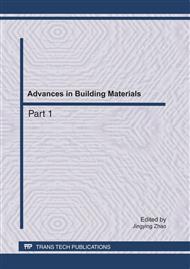p.606
p.613
p.618
p.623
p.628
p.633
p.638
p.642
p.648
Design Method for Flat Geotextile Tubes filled with Inhomogeneous Slurry
Abstract:
The circumference tensile force developed in the geotextile during filling the tube is the dominant factor to construct a safe dike. Based on the feature of flat tubes, a iterative procedure is programmed, with which the shape of the large size geotextile tube, as well as the relationship among the tube size, the pumping pressure, the unit weight of the slurry and the tensile stress developed in the geotextile during filing the tube can be determined. In the procedure, the inhomogeneousness induced by the soil grain sedimentation is also considered.
Info:
Periodical:
Pages:
628-632
Citation:
Online since:
May 2011
Authors:
Keywords:
Price:
Сopyright:
© 2011 Trans Tech Publications Ltd. All Rights Reserved
Share:
Citation:


